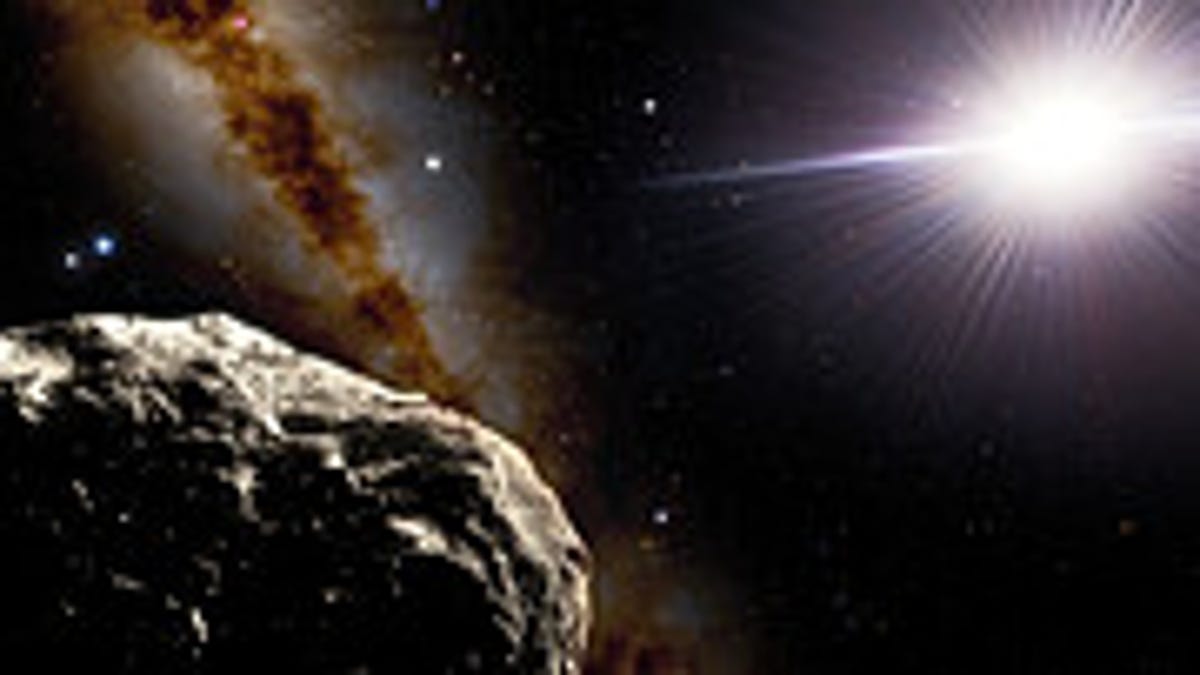How to Watch a Stadium-Size 'Potentially Hazardous' Asteroid Zip by Earth Today
Don't worry, it doesn't pose any actual threat.

In this illustration, an asteroid can be seen in the foreground in the lower left. The two bright points above it on the far left are Earth (right) and the moon (left). The sun appears on the right.
A space rock measuring a fifth of a mile across (about a third of a kilometer) is set to fly by Earth on Monday, and one online observatory is offering a close-up look.
The asteroid named 1999 VF22 will officially be nearest to our planet at 11:54 p.m. PT, when it zips past at a distance over 3.3 million miles (5.4 million kilometers), its closest pass in over a century. For comparison, our moon orbits at less than 250,000 miles (400,000 kilometers) away most of the time.
That means this aircraft carrier-sized asteroid poses absolutely no threat to any person or planet you know. But it is still considered "potentially hazardous" by NASA's definition. This label doesn't take into account any actual degree of risk or threat to our world. Basically, anything coming closer than 4.6 million miles that's big enough to have a brightness of at least magnitude 22 gets tagged "potentially hazardous."
The size of 1999 VF22 also means astronomers will be able to study it using radar and telescopes. The Virtual Telescope Project, based in Rome, will be sharing its observations online Monday.
NASA Solar System Ambassador Eddie Irizarry also writes for EarthSky that "you can use a (large) backyard telescope to watch it slide past."
As the name suggests, 1999 VF22 was originally discovered in 1999, by the Catalina Sky Survey in Arizona.
The online watch party starts at 4 p.m. PT and you can join below. If you miss it this time around, it will be a long wait before this particular asteroid returns for a slightly closer pass, in 2150.

